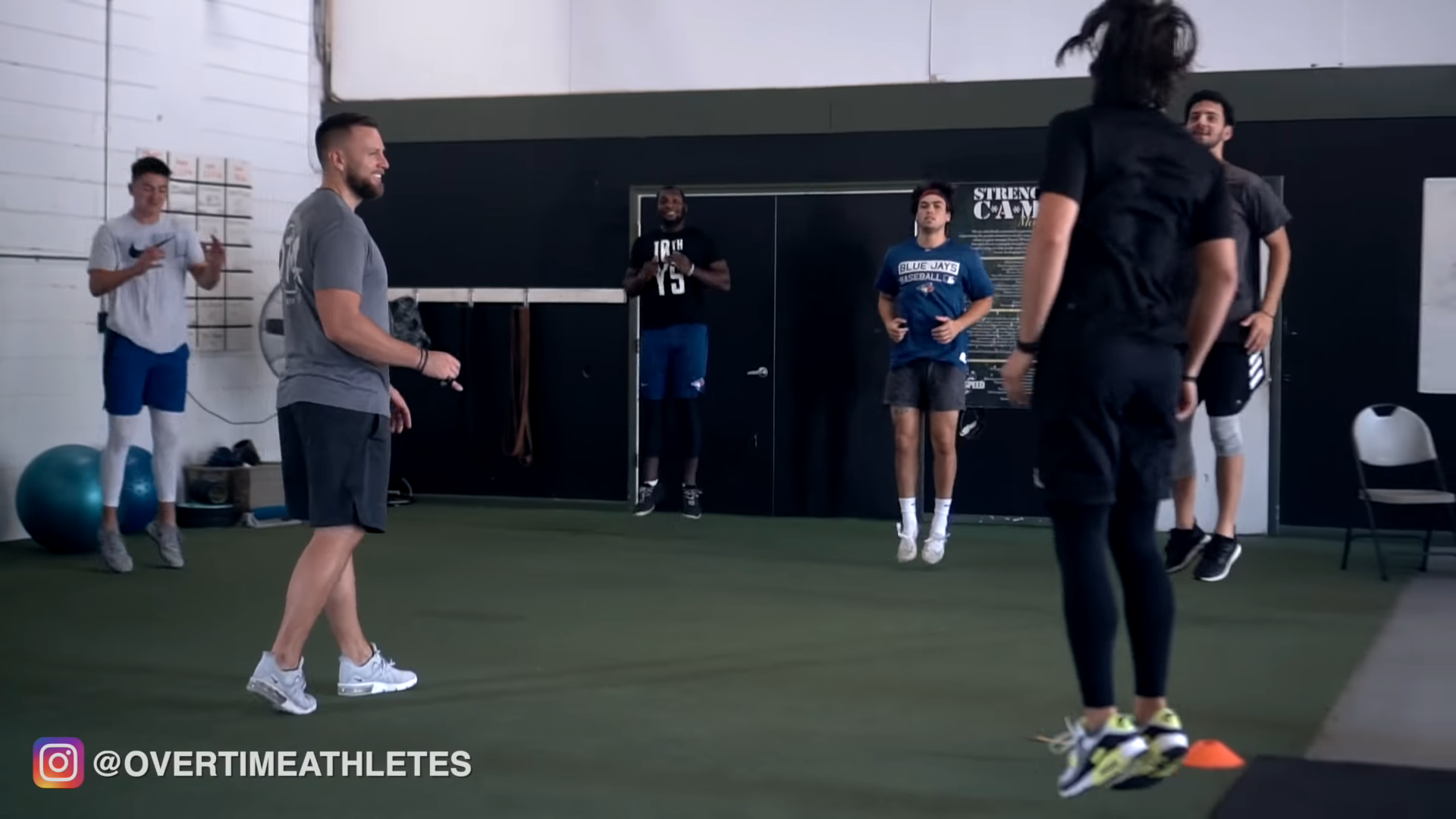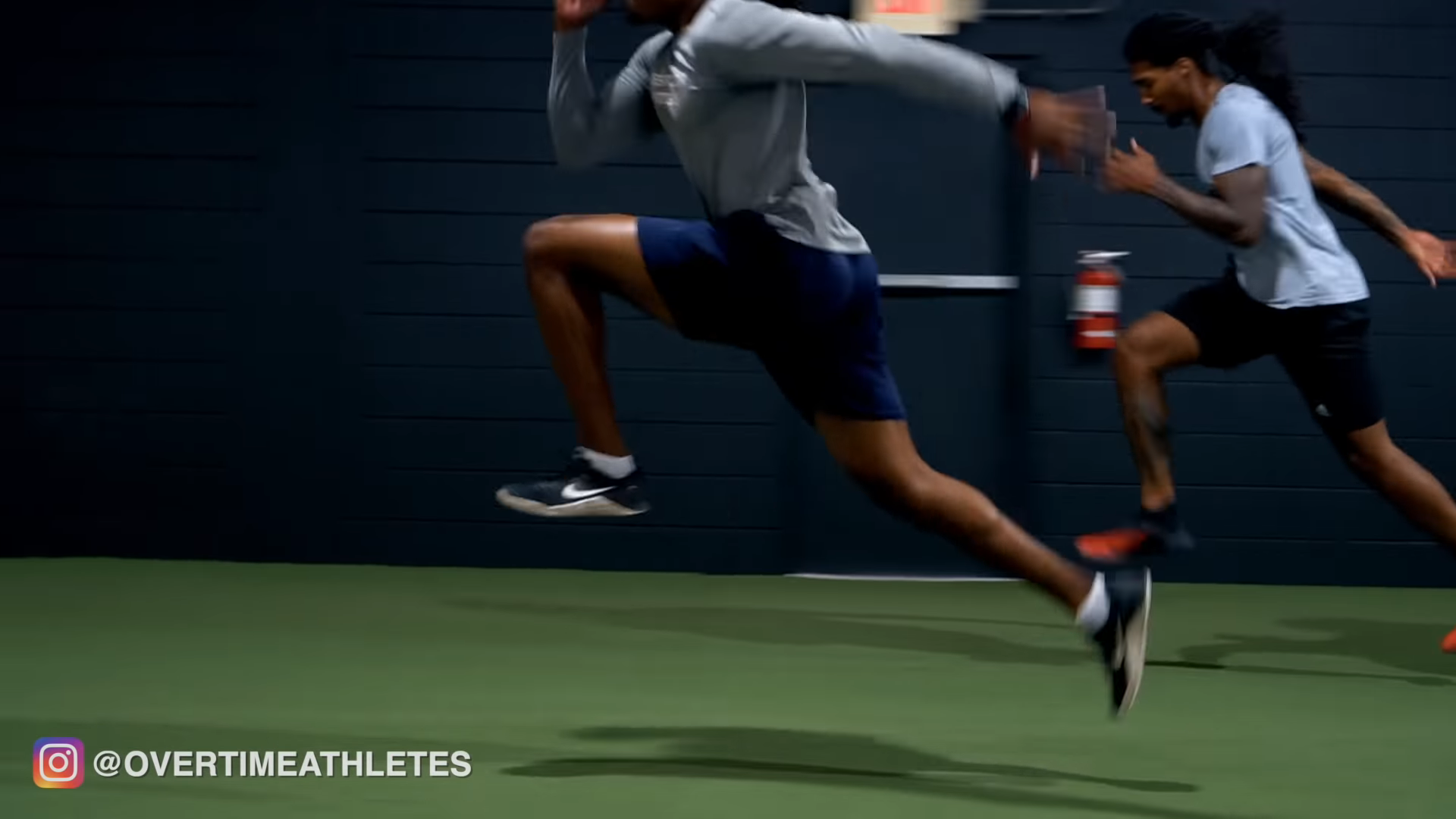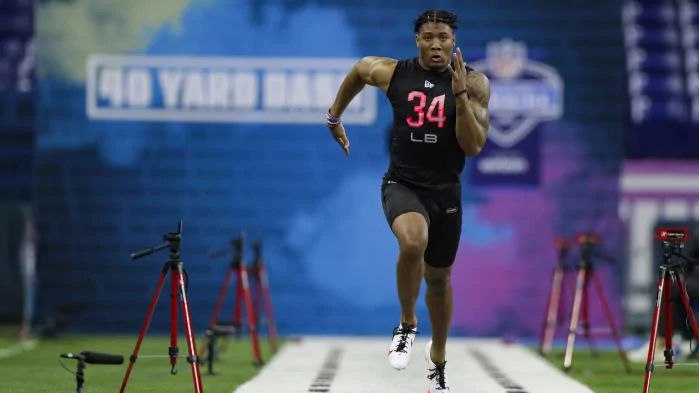Speed workouts are an important part of your weekly training breakdown as an athlete. If you want to play with more power, have a quicker first step, and ultimately win more on the field or court it’s important that you know how to design a speed workout program for athletes.
I’m going to simplify a speed workout into three different parts…
While I share a lot of drills that focus specifically on acceleration or top speed, today I want to give you the framework I use to design an actual speed workout where the goal is to enhance your overall quickness.
First and foremost, speed is something I work on with my athletes – depending on where they are in their season as well as the sport they play.
I’ll typically split this up into two sessions a week:
- The first focusing on top speed
- And the next on acceleration.
This will also depend on the actual needs of the athlete. While one guy might need a bit more linear speed focused work, another should put time into their starts and acceleration.
1. Speed and Movement Prep

One of the most important concepts of training is building a strong foundation from which to progress.
What do I mean by this?
If you start off doing drills that are too complex, you’re likely not using great form. At this point, you may as well not even be doing the drill since you’re not getting much out of it… That’s why I always use the phrase “isolate and elevate” to make this point.
Thats why it’s important to start your speed workout off with speed and movement prep to get the blood flowing and a bit of mobility into the lower limb (foot and ankle complex).
This is the activation process which primes your muscles and nervous system to be able to work at a high level throughout the workout you’re about to perform.
These are gonna be your low level plyometrics such as:
- Pogo jumps
- A- Skips
- B-Skips
Click here for more low level plyometrics to add to your speed workout.
2. Speed Workout Mechanics

Next you can move into the second part of your workout: mechanics.
This is where I like to break down the individual motor patterns you are moving through while sprinting. Typically I’ll break this down into acceleration and top-speed, which coincide with front-side and back-side mechanics.
ACCELERATION
Have you ever watched a 100m dash? The “start” or takeoff is the acceleration phase of the run.
Here the legs are moving in a piston-like pattern, where you stab the ground with the feed directly below the hips. Acceleration is critical to beating your competition off the line, interfering a pass, or stealing a base. It’s that first step quickness that makes you reactive on the field.
A few great acceleration drills to focus on are:
- Wall Drill
- Half Kneeling Starts
- Kickback Starts
Click here for the 11 BEST ACCELERATION DRILLS FOR ATHLETES
TOP SPEED
Usually about halfway through that 100m dash, the athlete finally starts to hit top speed (and you can usually tell when they really hit their stride). At top speed, the legs are working in a cyclical pattern so it benefits you to break that movement down and really work to make it efficient.
In more of a game-like setting, top speed can make the difference between you driving the ball to net or sailing through to the end zone.
Front-side mechanics play a bigger role into your top speed such as:
- A-Skips
- Elevated Hip Switch
See this post for ADVANCED LINEAR SPEED DRILLS
You should always include mechanics as a part of your speed workout. By training a pattern over and over again, you can begin adapting and see bigger results, faster.
3. Integration

Finally towards the end of your speed workout, I encourage you to actually begin integrating different patterns that will suit your game. You repeatedly worked on the mechanics to build a pattern, so you can go out and bring those patterns to whatever sport you play.
Whether it’s faking jukes down the turf, or reacting to a whistle there’s tons of ways to bring more athleticism into the gym…
If you’re interesting in learning how to integrate more speed workouts into your sports-specific training, I highly suggest you peek over at the Athletic Speed System.
This guide shares over a decade of athlete-proven workouts that’ll get you game ready in just 14 weeks, using the 3 pillars of speed development:
- Relative Force Production
- Acceleration Mechanics
- Maximum Velocity Mechanics
Run into your next season with confidence, a quicker first step, and more to prove.
